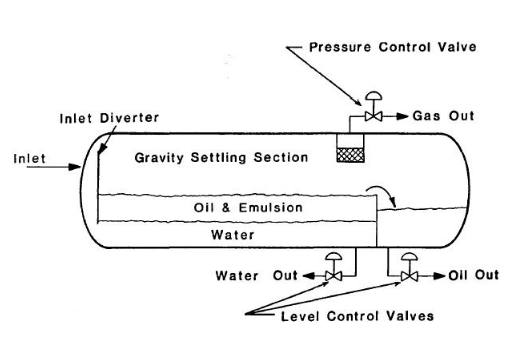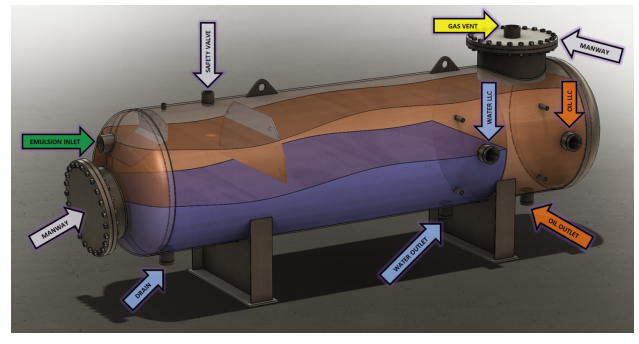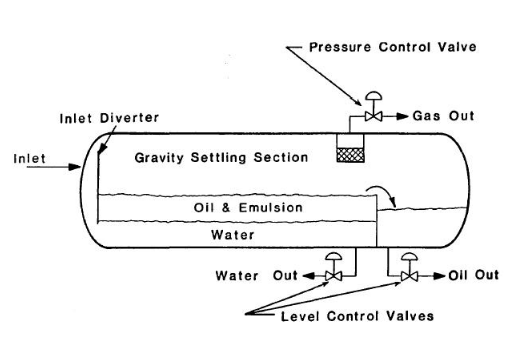

Three phase separator are designed as either horizontal or vertical pressure vessel. The fluid enters the separator and hits an inlet diverter. This sudden change in momentum does the initial gross separation of liquid and vapor as discussed in Two Phase Separator. In most designs, the inlet diverter contains a downcomer that directs the liquid flow below the oil/water interface. This forces the inlet mixture of oil and water to mix with the water continuous phase in the bottom of the vessel and rise through the oil/water interface. This process is called “water-washing,” and it promotes the coalescence of water droplets which are entrained in the oil continuous phase. The inlet diverter assures that little gas is carried with the liquid, and the water wash assures that the liquid does not fall on top of the gas/oil or oil/water interface, mixing the liquid retained in the vessel and making control of the oil/water interface difficult.

The liquid collecting section of the vessel provides sufficient time so that the oil and emulsion form a layer or “oil pad” at the top. The free water settles to the bottom. Figure 5-2 illustrates a typical horizontal separator with an interface controller and weir. The weir maintains the oil level and the level controller maintains the water level. The oil is skimmed over the weir. The level of the oil downstream of the weir is controlled by a level controller that operates the oil dump valve. The produced water flows from a nozzle in the vessel located upstream of the oil weir. An interface level controller senses the height of the oil/water interface. The controller sends a signal to the water dump valve thus allowing the correct amount of water to leave the vessel so that the oil/water interface is maintained at the design height. The gas flows horizontally and out through a mist extractor to a pressure control valve that maintains constant vessel pressure. The level of the gas/oil interface can vary from half the diameter to 75% of the diameter depending on the relative importance of liquid/gas separation. The most common configuration is half full, and this is used for the design equations in this section. Similar equations can be developed for other interface levels.